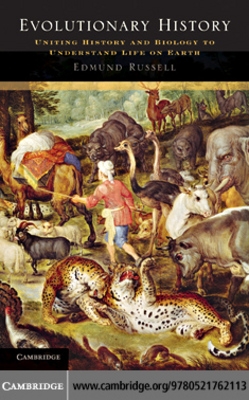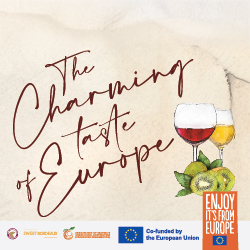
Evolutionary History: Uniting History and Biology to Understand Life on Earth By Edmund Russell
Book by: Edmund Russell (Cambridge University Press, 2011, 216pp.)
Reviewed By: Don MacLean
To the untrained eye, it may appear impossible to see evidence of the evolutionary process in the world around us. All animals and plants are born and live whatever life they have before passing on. Human beings may have evolved from our distant ancestors, but where is there evidence that we are still evolving in any discernible fashion? Despite the fleeting nature of all life, the forms living beings assume can appear fixed. A horse is a horse. A tree is a tree. A person is a person. Similarly human beings exert a staggering influence on the planet’s environment, but evolution does not appear to be part of that ongoing process. The study of ecology sheds light on how the environment is changing, but typically underestimates or ignores altogether the role of evolution in facilitating change or as an outcome of such change. It’s as though evolution either occurs outside of history or not at all (as creationists would have us believe). Yet, as biologists will tell you, there is evidence everywhere of evolutionary processes subtly but often profoundly shaping the world. We just need to look more closely. In learning how to do so, it is useful to re-examine how evolution has shaped history.
This, at least, is the underlying theme of Edmund Russell’s book, Evolutionary History: Uniting History and Biology to Understand Life on Earth. Agriculturally, technologically, economically and politically: virtually every large scale human endeavour, according to Russell, has evolutionary impacts not only on humans but on the natural world. The book is rich with examples. Consider the fate of elephants in Zambia, Africa. It used to be that the vast majority of elephants had tusks, with good reason. For an elephant, tusks were extraordinarily useful. They helped the creatures dig for water in dry landscapes. To use the biological term, “natural selection favoured tusk bearing.” Yet towards the end of the 20th century the majority of elephants living in Zambia were without tusks. Why would the elephant species develop without tusks when for centuries natural selection dictated the opposite? The answer is that elephants with tusks were ruthlessly hunted and killed in order to serve the demand for ivory. Elephants without tusks thus began to have a much higher survival rate than those with tusks. This example also points to the role of the state in shaping the evolutionary process. Zambia’s state exercised very little control over elephant hunting and thus did nothing to stem the near elimination of tusked elephants.
By contrast, the Canadian state’s more active role in regulating the hunting of bighorn sheep rams has shaped the evolutionary process in a less predictable fashion. Canadian authorities understood that hunters of the bighorn sheep in Ram Mountain, Alberta desired large horns above all else. In a bid to manage the species’ survival, the government established a minimum size limit on the sheep that could be hunted. The inadvertent outcome of the state’s efforts was to selectively favour those bighorn sheep rams with smaller horns. More of the smaller sheep survived and thus the likelihood that the genetic trait dictating small horn size was also more readily passed down to offspring.
By reasserting humanity’s central role in shaping the evolutionary process, Russell raises questions that are not merely of academic interest. To begin with, our attempts to minimize the spread of communicable diseases can facilitate the resistance among those pests (like the malaria carrying mosquito) and infectious organisms (such as the malaria plasmodium, which causes malaria) that together spread infections. As Russell demonstrates, insects and bacteria and other such organisms are very well suited to thrive in the game of evolution. They generate many offspring, thereby increasing the odds that genetic traits conducive to survival in the face of threats are passed down. They can also readily adapt to different habitats.
Conversely, many other species have been driven to extinction because of the combination of the human impact on their environment and their relative inability to evolve quickly. Millions of buffalo used to roam the Canadian prairies. Railroad construction then rendered human mobility across the landscape much faster and more efficient. As European communities moved further west more and more of the buffalo’s terrain was used for agricultural purposes. Moreover, the proliferation of guns made entire herds of buffalo easy targets. The buffalo, for its part, had no evolutionary defenses to cope with the sudden and far-reaching anthropogenic-induced changes to their environment. Within a few generations, North America’s buffalo population was all but wiped out. The two examples highlight our power to not only shape the evolutionary process, but to engender unwelcome predicaments. As Russell claims, human beings can inadvertently facilitate conditions conducive to the evolution of organisms we would prefer to do without and the extinction of those species we should want to see thrive. What are the implications of such predicaments? How, for example, should we adapt if antibiotics engender bacterial resistance and thus more virulent and deadly strains of diseases such as malaria or tuberculosis? How will climate change impact the evolution of species? Russell’s marvelous book forces us to consider such challenging questions.









